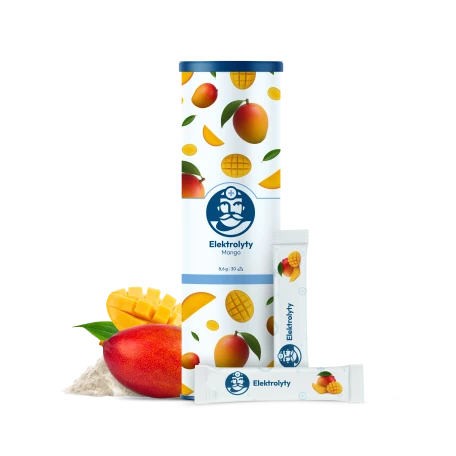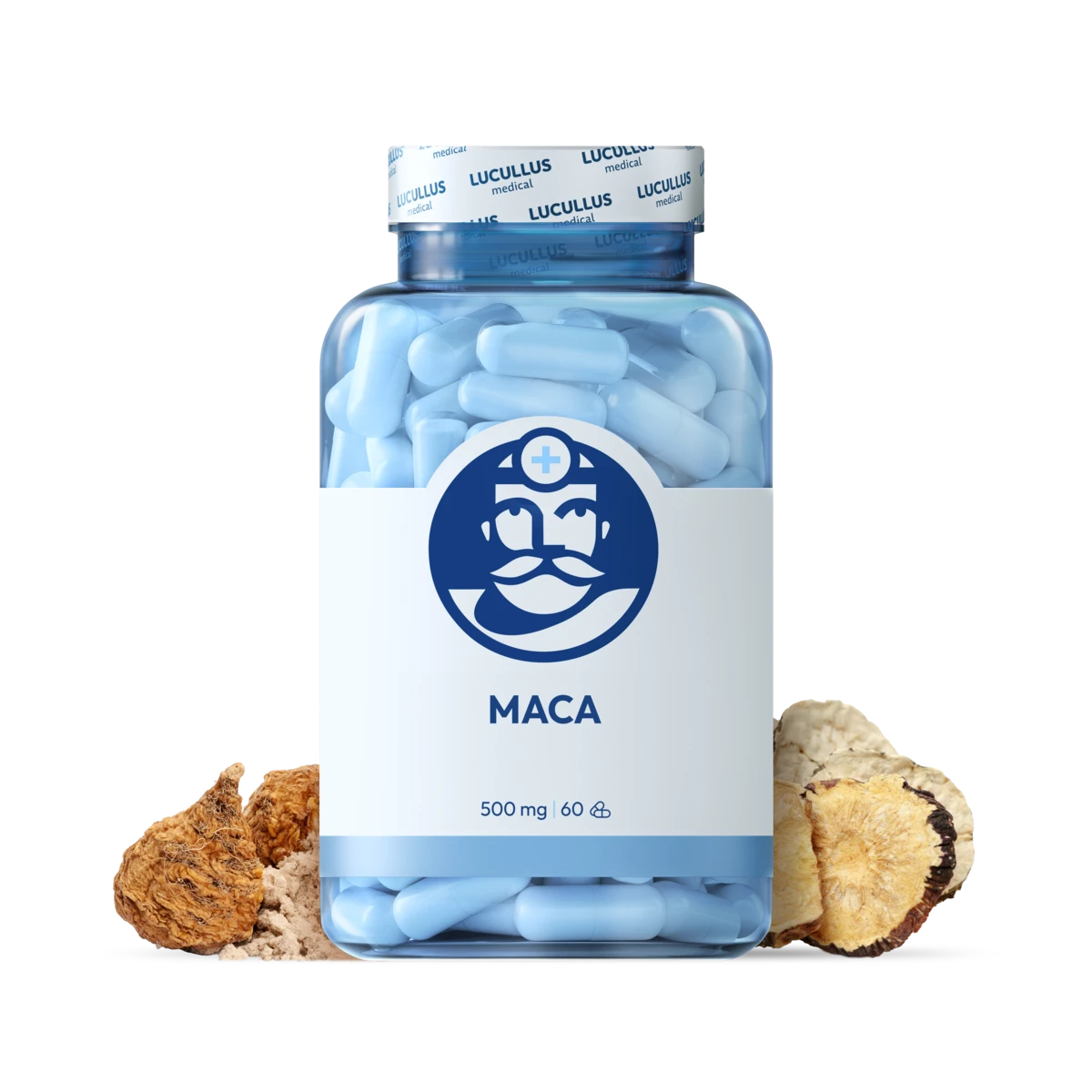
Surprisingly Resilient Maca - Peruvian Cress
This remarkable plant (Lepidium mayenii) from the Peruvian Andes, where it is grown at extreme altitudes (4000 m a.s.l.). It is incredibly resilient and can survive and grow in conditions where most other plant species would not survive, such as low temperatures, strong winds, and intense UV radiation. Its ability to adapt to harsh environments enriches it with nutrients and substances that positively impact the human body, enhancing resistance to both physical and mental stress.

Calming Magnesium (Magnesium Bisglycinate)
Magnesium is an essential mineral for the proper functioning of the body. The name magnesium originates from the Greek city of Magnesia, where this element was first discovered in 1755. It is the 8th most abundant element on Earth, constituting about 2% of the Earth's crust. It has a naturally sour taste, which is also present in mineral waters. We find it in every cell of a green plant, and (magnesium ions are present) also in every cell of the human body. Our body needs magnesium for more than 300 biochemical processes, such as energy production and nucleic acid synthesis, maintaining the correct heart rhythm, and blood pressure. It's hard to find a process in the body that magnesium does not affect.

Apple Vinegar , ... not just for models
Apple vinegar is one of the most popular natural products with a wide range of health benefits. Apple vinegar has been sought after for centuries for its beneficial effects on health, including supporting digestion, regulating weight, maintaining stable blood sugar levels, and improving cardiovascular health.

There are days when even women need to find balance ...
In a natural supplement is hidden a less known plant hairy yam (Discorea villosa, Wild yam) from the family Dioscoreaceae. Let's get to know it ☺ There are more than 600 species of yam plants, the most notable species is wild yam (Dioscorea villosa). This perennial, low-maintenance vine (grape), of equatorial regions has heart-shaped leaves. The leaves and root contain diosgenin (the primary component), the root is used in medicine and in our supplements, as a concentrated extract (the highest yield), it is structurally similar to cholesterol. This substance was used to make the first contraceptive pills.

Premium Fat Burner Dr. Lucullus
It is said that whoever invents the weight loss pill will become the richest person on the planet. It makes sense, as a huge number of people on our planet struggle with being overweight. According to World Health Organization (WHO) statistics, every eighth person is diagnosed with obesity. And more than 2.5 billion people suffer from being overweight! So, do we have a weight loss pill? Well, yes and no...

Iron - the secret of your health and energy
Imagine your body as a factory working at full capacity, providing energy, growth, and cell repair, with iron as the fuel that keeps it running. If iron reserves are depleted, you immediately feel tired, weak, have heart palpitations, or paler skin. Other symptoms of iron deficiency include brittle nails, dry hair, shortness of breath, sleep problems, reduced concentration, cold extremities, increased susceptibility to infections, and anemia (a lack of red blood cells caused by too little iron in the body) manifesting as extreme fatigue. In anemia, the body is not adequately supplied with oxygen and tires quickly. A signal of iron deficiency may also be bruising, as this mineral plays an important role in the production of hemoglobin, which supports the proper function of platelets.






























